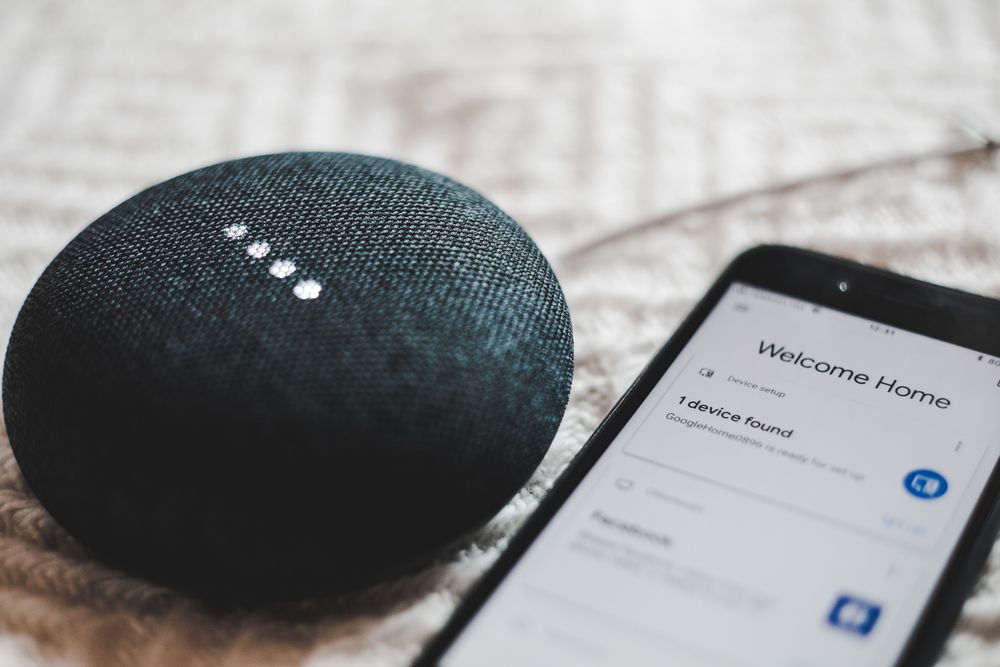|
Welcome. What’s one way to spruce up a Monday? Give away free stuff.
Enter our VR headset giveaway: This week, six Emerging Tech Brew readers will be randomly selected to win the Oculus Quest 2 All-In-One virtual reality headset.
Want in? All you have to do is refer five friends to Emerging Tech Brew using your custom referral link.
The virtual world awaits you. Start sharing now.
In today’s edition:
 Bug bounty for bias Bug bounty for bias
💱 Ethereum’s upgrade
 Why Matter matters Why Matter matters
—Hayden Field, Ryan Duffy, Jordan McDonald
|
|
|
Francis Scialabba
|
Yesterday, Twitter announced the winners of a brand-new bounty competition. But unlike the “bug bounties” commonly offered by tech companies—which reward those who spot security flaws and site vulnerabilities—this challenge was focused on something entirely different.
It was billed as the industry’s first-ever algorithmic bias bounty competition. It kicked off July 30 and was spearheaded by Rumman Chowdhury, who leads Twitter’s Machine Learning Ethics, Transparency and Accountability (META) team, and Jutta Williams, a product lead on the META team.
How it worked
Participants were given access to the code underlying Twitter’s saliency algorithm for image cropping, which predicts the ideal way to crop and display a picture on Twitter.
-
In May, the company found that this saliency model had gender and racial biases and moved away from using the technique.
To pull the competition off, Chowdhury told us META needed to work across multiple teams at Twitter. Overall, she said the toughest task was building a rubric for algorithmic harms and biases.
- “There’s a lot of great research and a lot of great work done on taxonomy of harms and biases, but we could find very little in specifically breaking them down into itemized tasks or itemized harms, and being able to enumerate what that might look like—and also providing a value to it,” Chowdhury said.
-
The rubric was ultimately based on a range of factors, including harm types (e.g., stereotyping, psychological harm), the damage or impact of a harm, and the number of affected users.
Winners, winners: Twitter awarded five prizes (and a couple of honorable mentions) on the day: first place ($3,500 prize), second ($1,000), third ($500); most innovative ($1,000); most generalizable ($1,000). A panel of four judges from the AI and infosec worlds graded the submissions according to META's rubric.
Looking ahead…questions remain about participation from members of affected communities, the type of community the program builds, how well Twitter will translate the program’s individual findings into big-picture changes, and whether the tech industry at large will adopt the practice.
But Camille François, who is co-leading a project on algorithmic harms at the Algorithmic Justice League, told us it’s encouraging to see advancements in the evaluation of how AI systems affect people.
“I think we're quite eager to see how it plays out,” François said. “We want a wider set of communities and affected parties to participate. ...We know that there's appetite out there for people saying, ‘Hey, I feel affected by this. ...Let's disclose this together.’”—HF
|
|
|
Unsplash
|
Ethereum underwent its biggest upgrade in years last week, when the cryptocurrency’s core development community activated the London hard fork.
The London update contains Ethereum Improvement Proposal (EIP) 1559, which overhauls the on-chain transaction process by making fees more predictable and user-friendly (but not necessarily lower).
- One perennial problem with Ethereum’s network is congestion, driven recently by NFTs, DeFi, and the like.
- The spiky usage patterns that result from congestion tend to translate into higher “gas fees” (the price you pay to process a transaction).
With EIP-1559, the base gas fee set by network usage is “burned,” thereby removing some ether from circulation forever. Previously, transaction fees went entirely to miners. If/when ETH’s burn rate exceeds the issuance of new tokens, the asset could become deflationary, as overall supply reduces with time.
Zoom out: The world’s second-largest cryptocurrency has an even bigger transition in its near-ish future: Ethereum 2.0. This will shift Ethereum’s consensus system to proof-of-stake. This transition away from computationally intensive mining, which has been delayed many a time, is when boosters say ether will become truly deflationary.—RD
|
|
|
|
A story you know too well, by Monday.com.
So...Paul sent the final version of your project last Thursday via email.
And you sent him a question on Slack. And he answered on MS Teams. Then you checked the original Excel spreadsheet but Jean hadn’t updated it. So, Paul told you to check Salesforce instead...and the whole thing just spun out of control.
Dang it, Paul.
If you’re like most teams, you have to check several different platforms just to get ONE job done.
Not anymore, thanks to Monday.com.
With 40+ native integrations and an API, Monday.com allows you to connect all of your favorite tools. So, you can access the information you need from one central location.
If you’re ready to see what real efficiency looks like, start your 30-day free trial of monday.com right here—an offer only available to the Brew Crew.
|
|
|
Unsplash
|
Amazon announced last month that it’s committing almost all of its Echo speakers to support Matter, an industry standard meant to make smart home technology cross-compatible.
- The only Echo speakers that wouldn’t see the upgrade are some first-gen speakers.
- In addition to Amazon, Apple, Google, Samsung SmartThings, and over 170 other companies are collaborating on Matter.
Why this...Matters
Matter is looking to tackle one of the biggest issues in smart home technology: compatibility. A key step to tackling that is getting the most influential players on board—and that’s now done.
- There isn’t a concrete timeline for when Matter will roll out, but it is expected to be fully operational by the end of 2021.
Matter leverages wi-fi, Thread, and Bluetooth Low Energy to create its network layers, which allows users to connect and use their devices seamlessly. For instance, in a Matter-ified world, your new smart light system will work whether you have Alexa, Siri, or Google Assistant.
- Wi-fi will be used for high-bandwidth data transfers like streaming video.
- Bluetooth LE will be used to set up higher bandwidth devices like HomePods and security cameras.
- Thread, a mesh networking protocol, will be used for low-bandwidth device setup for things like motion sensors.
Bottom line: Amazon’s move is a signal that Matter is here to stay, and the current reality of spotty interoperability could soon be a thing of the past.—JM
|
|
|
Electrify America
|
Stat: Just under 10% of US city dwellers have a public electric vehicle charging station within a 5-minute walk from their home, per a new report from Mobilyze.
Quote: “It is still possible to forestall many of the most dire impacts, but it really requires unprecedented transformational change—the rapid and immediate reduction of greenhouse gases.”—Ko Barrett, vice chair of the Intergovernmental Panel on Climate Change (IPCC), on a press call about its new climate report
Explore: This interactive mobile coverage map of the US.
Developers, assemble: Auth0 + Okta Developer Day is happening on August 24. You’ll discover how the identity space is evolving, learn best practices in privacy and security, and gain insights from peers and keynote speakers. Register for free here.*
*This is sponsored advertising content
|
|
SPONSORED BY EDEN WORKPLACE
|
|
Now your employees can sit next to their work bestie (and the coffee machine). Eden Workplace lets your team view and select a dedicated desk for the day—or several days. Teammates can even see where colleagues are sitting. And if you’re an HR team member or other qualified peep who speaks to Eden Workspace, you’ll receive a free Patagonia black hole duffel just for chatting with them. Learn more today.
|
|
-
SpaceX is partnering with a Canadian tech startup to launch a digital billboard into space, meaning you won’t even be able to travel to outer space to skip ads.
-
Call center employees in Colombia say their employer is pressuring them to install surveillance cameras in their homes to monitor their work-from-home productivity.
-
Google is planning a new Silicon Valley office focused on hardware development.
-
Apple responded to concerns about it’s algorithm that will scan iPhone photos for evidence of child abuse.
|
|
THREE THINGS WE’RE WATCHING
|
|
Tuesday: Unity, a 3D/mixed reality game-engine maker, releases earnings. It IPO’d less than a year ago, and we’re curious to see how the market reacts now that “metaverse” has become the buzzword of the year.
Monday–Tuesday: Bloomberg reports that the two groups of senators dueling over the infrastructure bill’s crypto tax provision could broker a last-minute deal. The new amendment would have to be introduced by Tuesday morning, when the current debate period expires.
Thursday: A smorgasbord of interesting earnings calls: Palantir, Foxconn, and Baidu.
|
|
|
Last week, DeepMind researchers released a paper detailing a technique they used to train “generally capable AI agents” to learn to play new games without explicit training in that game.
Why this matters: For a human, “generally capable” is an underwhelming compliment. But for an AI agent, it’s among the highest of high praise—AI systems notoriously struggle to transfer what they’ve learned to new domains.
- Case in point: DeepMind’s AlphaGo, which beat world champions in shogi, chess, and Go, had to train from scratch on each game.
|
|
|
Catch up on the top Emerging Tech Brew stories from the past few editions:
|
|
|











